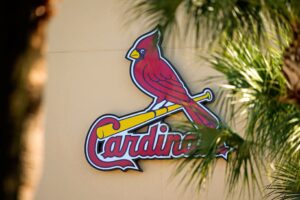The New York Mets finished 2016 with a record of 87-75 and lost in the Wild Card round of the playoffs. The 2016 season saw the Mets make their ninth playoff appearance in franchise history. The team received valuable contributions from various players over the course of the season. Last Word On Baseball writer John Jackson will count down the top ten most valuable Mets on a weekly basis. He will also analyze the value they brought to the team this past season. Number 10 was Steven Matz, number nine was Neil Walker, number eight is Jacob deGrom, and number seven is Curtis Granderson.
Top Ten Most Valuable Mets of 2016
7. Curtis Granderson
Granderson signed a four-year, $60 million contract in 2014 to play for the Mets. While Granderson was a top power-hitter on the market at the time, many Mets fans had bad memories of a similar contract with Jason Bay that was terminated in his third year with the team. In his first season, Granderson got those comparisons to Bay, but finished strong. Last year, Granderson had his highest number of home runs and RBI since 2012 and his best batting average since 2011. He also finished 18th in the MVP voting. Much was expected from the Grandy Man in 2016.
Season Recap
April and May
In 2014 and 2015, Granderson got off to slow starts in the first month of the season. Compared to the last two years, Granderson actually did fine in the first month of 2016. While he was limited to one hit in the first six games, Grandy picked things up and got at least one hit in 14 of the 16 remaining games in April. He finished the month with four home runs, nine RBI, and a slash line of .241/.347/.471.
The next month was similar in the power department for Granderson, as he hit five home runs and seven RBI. What was different was his hitting. More than half of his hits were for extra bases. Granderson struggled with hitting singles, as he only had nine, and he also struck out a whopping 33 times in 100 at bats.
June and July
Granderson became a different hitter in July and August. He lost his power and started hitting to get on base instead. Between the two months, he only had seven home runs and 13 RBI. Part of the reason was that he was in the leadoff spot. He started to conform to the mold of a true leadoff hitter, which was not expected of him when he was signed by the Mets. Manager Terry Collins had few options at leadoff, and Granderson did well in his time in the role in 2015.
This was not a productive use of Granderson at all. His batting average was slightly higher than usual, as he hit .255 in June and .253 in July. His on-base percentage was also slightly higher, as he got on base at a clip of .358 in June and .337 in July. While that may be good for Granderson, that is not good for a leadoff hitter. Instead, what the Mets got was mediocre production from the leadoff spot and seven solo home runs mostly due to his positioning in the lineup.
When Jose Reyes finally starting leading off in July, Granderson was still batting in the two-hole. Also, Granderson continued to lead off in three games of Reyes’ absence at the end of the month.
This was not a great time period for Granderson or the Mets, who had a 25-28 record between the two months.
August
Collins realized Granderson’s struggles in the leadoff spot and two-hole in the middle of August. On August 17, he dropped him to the number six spot in the lineup. He did not keep him there long, and instead put him in a variety of different spots. While he displayed a tad more power with six home runs, his batting average was .176, his lowest monthly mark on the year.
September and October
Granderson was moved to the cleanup spot on September 3 and had two RBI on a hit. The next day, he stayed there and hit a sac fly and a two-run homer. After that, the cleanup spot is where he spent most of his time for the remaining games on the year (including the Wild Card Game).
Granderson performed extremely well for the rest of the season. He hit .286/.400/.604 in September with eight home runs, 21 RBI, and 23 runs in 91 at bats. He also had three hits in five at bats in the two regular season games in October.
In the Wild Card Game, Granderson, like six other players on the Mets, went hitless.
Analysis
Granderson finished 2016 with a .237/.335/.464 slash line, 24 doubles, five triples, 30 home runs, 59 RBI, and 88 runs scored in 150 games and 545 at bats.
Although he had a roller coaster of a season, he never went into any huge slumps. His five-game hitless streak during the beginning of the season was his longest drought of the year.
While his slash line does not look good, it was better than his line from 2014. For Granderson, that is typically what is expected at this stage of his career.
What was most impressive was his power output. His 30 home runs were the most he’s had with the Mets, and even more than last season when he performed better all-in-all. He was behind Yoenis Cespedes for the team lead by only one.
His lack of RBI production can be attributed to his extended time in the leadoff spot and two-hole, where he spent 406 out of his 545 at bats. Between those two spots, he had 18 home runs and 32 RBI.
Of course, Collins’ positioning wasn’t the be-all, end-all. With runners on base, Granderson hit .209/.317/.348 with six home runs and 35 RBI. With no runners on, he hit .251/.345/.525 with 24 home runs and 24 RBI. Granderson was part of the reason too, as he couldn’t hit as well with runners on base.
It is not easy to hit 24 of 30 home runs as solo shots. In doing so Granderson set a new precedent for the least amount of RBI in a 30-home run season. The second lowest was Rob Deer, who hit 32 home runs and had 64 RBI in 1992.
His Value to the Team
While Curtis Granderson’s season had its ups and downs, it was still one of the best performances in 2016 by a Mets hitter. The Mets were tied for 26th in the majors in runs scored, with 671. Granderson led the team with 88 runs scored. The closest to him on the Mets was Cespedes, who scored 72 runs in 18 fewer games. Without Granderson ,the Mets would’ve been even lower on that list.
As already mentioned, he was also second in home runs and third in RBI. Furthermore, he was first in triples (five), games played (150), and at bats (545), and third in doubles (24).
He also provided the Mets with versatility, as he played all three outfield positions and batted in all nine positions in the order. While his defense isn’t what it used to be, he did quite well, even in center field. He was the only outfielder in MLB, among all qualifiers, to not commit an error. So while his range factor or zone rating may have not been as competitive compared to others, he was able to make all the routine plays.
Why He Deserves Sixth on This List
Granderson contributed more than the people lower on this list. For example, the only hitter below him was Walker. Granderson outplayed him in nearly every stat and stayed healthy enough for Collins to use him. While Walker’s slash line was better, that isn’t a good comparative stat between the two since both would probably be very different based on the amount of at-bats.
He did not get higher on this list because he was ranked as the third most valuable hitter on the team. Part of the reason is because his 24 solo home runs limited his impact. He drove in far fewer runs than expected from a 30-home run hitter. Also, his on-base skills were far below other hitters.
Granderson would have been higher on this list last year after an all-around better season. This year, he had into a solo-home-run-or-bust mentality. He still brought a great deal of value to the team, but he had the potential to do more damage if Collins didn’t bat him leadoff for much of the season.
Main Photo:






